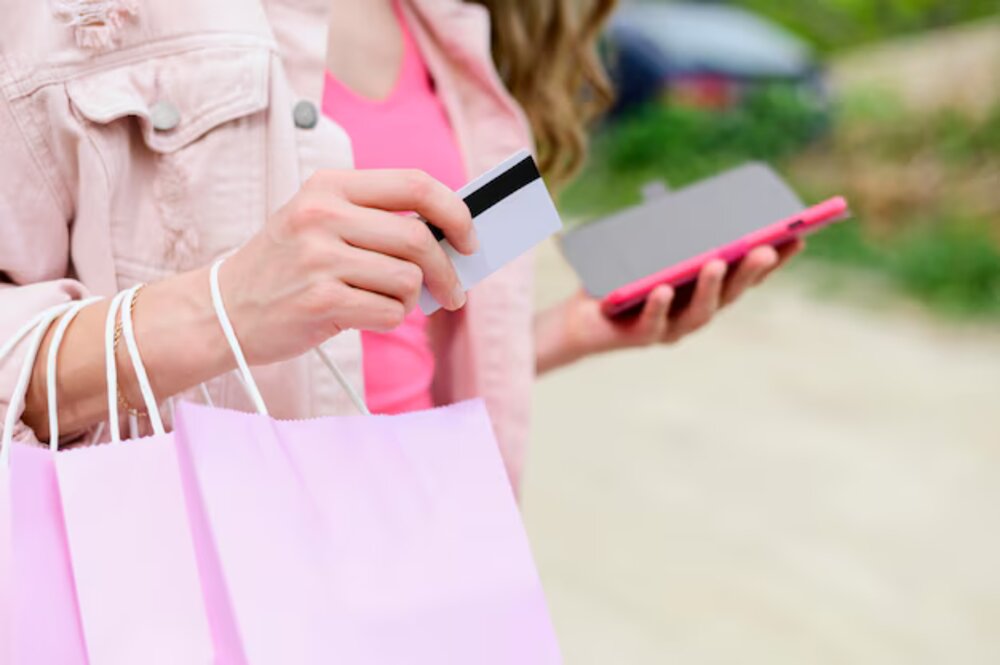
Should Ecommerce Websites Focus on Minimalistic Design Or Rich Visual Storytelling? Why?
Ecommerce websites often face a key design choice. Should they adopt a minimalistic design or rich visual storytelling?
This decision can impact user experience and sales. Minimalistic design emphasizes simplicity. It uses clean lines and fewer elements. This approach can speed up load times and make navigation easier. On the other hand, rich visual storytelling engages users with images, videos, and narratives.
It can create an emotional connection and tell a brand’s story. Both strategies have benefits and drawbacks. The right choice depends on your target audience and brand goals. Understanding these design approaches can help you decide which will work best for your ecommerce site. Read on to explore the pros and cons of each design style.
Minimalistic Design
Minimalistic design focuses on simplicity. It removes clutter, using only essential elements. This type of design is clean and straightforward. It enhances user experience by providing a clear and easy navigation.
Key Features
The key features of minimalistic design include:
- Simple Layout: Uses plenty of white space, making content easy to read.
- Limited Color Palette: Few colors create a clean look.
- Basic Typography: Uses simple, readable fonts.
- Flat Design: Avoids heavy textures and gradients.
- Essential Elements: Only includes necessary components like product images and descriptions.
Benefits For Ecommerce
Minimalistic design offers several benefits for ecommerce websites:
- Faster Loading Times: Fewer elements mean quicker page loads.
- Better User Experience: Simplicity makes navigation easy.
- Increased Focus: Highlights products and calls to action.
- Improved Mobile Experience: Works well on small screens.
- Higher Conversion Rates: Clear paths guide users to make purchases.
Minimalistic design in ecommerce helps create a seamless, user-friendly shopping experience. It emphasizes clarity and ease, leading to satisfied customers and increased sales.

Rich Visual Storytelling
Rich visual storytelling elevates an ecommerce website by engaging users through compelling narratives. This approach uses images, videos, and graphics to create an immersive shopping experience. Customers connect with the brand on an emotional level, making the shopping journey more enjoyable and memorable.
Key Features
Rich visual storytelling includes several key elements. High-quality images capture the product’s essence and highlight its features. Videos demonstrate the product in use, offering a real-world perspective. Graphics and animations can illustrate the product’s benefits and unique selling points. Interactive elements, such as 360-degree views, allow users to explore products from every angle.
Consistent branding ties everything together. The visual elements should align with the brand’s voice, colors, and style. This creates a cohesive and professional look. Storytelling should also be authentic. Real customer stories and testimonials build trust and credibility. These elements work together to tell a compelling brand story.
Benefits For Ecommerce
Rich visual storytelling can significantly boost ecommerce performance. It enhances user engagement by making the shopping experience interactive and enjoyable. Engaged customers spend more time on the site and explore more products. This increases the chances of making a purchase.
It also improves conversion rates. Visual content helps users understand the product better, reducing hesitation and increasing confidence. Customers are more likely to buy when they can see the product in action. Rich visuals also aid in building brand loyalty. An engaging and memorable shopping experience encourages repeat visits and word-of-mouth referrals.
SEO performance can also benefit. High-quality images and videos attract more visitors and encourage them to stay longer. This can improve the website’s ranking on search engines. Visual content also attracts social media shares, driving more traffic to the site. Overall, rich visual storytelling offers a powerful tool for ecommerce success.
User Experience
The user experience (UX) is crucial for ecommerce websites. It influences how customers interact and feel about a site. A good UX can lead to higher sales and customer loyalty. The design approach plays a key role in shaping this experience. Should ecommerce websites focus on minimalistic design or rich visual storytelling? Let’s explore the impact of both.
Impact Of Minimalism
Minimalistic design emphasizes simplicity and functionality. It reduces clutter and focuses on essential elements. This approach can improve navigation and speed. Users can find what they need quickly. A clean and simple layout enhances readability. This can lead to a more pleasant shopping experience.
| Advantages | Disadvantages |
|---|---|
|
|
Impact Of Visual Storytelling
Rich visual storytelling creates an immersive experience. It uses images, videos, and graphics to convey a brand’s story. This approach can captivate users and evoke emotions. It helps in building a strong brand identity. Users may spend more time exploring the site.
| Advantages | Disadvantages |
|---|---|
|
|
Both minimalistic design and rich visual storytelling have unique impacts on UX. The choice depends on the brand’s goals and target audience.
Conversion Rates
Conversion rates are crucial for any ecommerce website. They reflect the percentage of visitors who take a desired action. This could be making a purchase, signing up for a newsletter, or filling out a contact form. Focusing on conversion rates helps businesses measure success. It directly impacts revenue.
Minimalistic Design Influence
Minimalistic design aims for simplicity. It often uses clean lines, ample white space, and limited colors. This approach reduces distractions. It helps visitors focus on key actions. Fewer elements mean faster loading times. This can lead to better user experience. Faster sites often have higher conversion rates.
Minimalistic design also improves navigation. Users find what they need quickly. This reduces frustration and increases the likelihood of conversions. A streamlined design can guide users towards the call-to-action. This makes the shopping process easier.
Visual Storytelling Influence
Visual storytelling uses images, videos, and graphics to convey a message. It creates an emotional connection with visitors. This can increase engagement. Engaged users are more likely to convert. Stories make the shopping experience memorable.
Rich visuals can showcase products in a realistic way. They help users imagine using the product. This can boost confidence in purchasing decisions. High-quality visuals can also differentiate a brand. Unique images and videos can set a website apart from competitors.
Both approaches have their advantages. The choice depends on the brand and target audience. Testing different designs can reveal what works best for increasing conversion rates.
Brand Identity
Brand identity defines how your ecommerce website is perceived. It encompasses your brand’s values, mission, and visual elements. A strong brand identity helps build trust and loyalty among customers. The design of your website plays a crucial role in communicating this identity.
Aligning With Minimalism
Minimalism emphasizes simplicity and clarity. A minimalistic design reduces clutter and distractions. It allows users to focus on key elements like products and calls to action. This approach often uses a lot of white space, clean lines, and simple typography. It can make your brand appear modern and sophisticated.
Minimalism aligns well with brands that value functionality and efficiency. It also suits luxury brands aiming for an elegant and refined look. By using minimalistic design, you can highlight the quality of your products. This can lead to a more seamless user experience.
Aligning With Storytelling
Rich visual storytelling engages users through compelling images and narratives. This design approach uses visuals to convey the brand’s story and values. High-quality images, videos, and graphics are essential. These elements can create an emotional connection with your audience.
Storytelling is ideal for brands that thrive on emotional engagement. It works well for lifestyle, fashion, and travel brands. By using rich visual storytelling, you can make your website memorable. This approach helps in building a deeper connection with customers.

Case Studies
Case studies can provide valuable insights. They show how different design approaches impact ecommerce success. Let’s explore some examples.
Successful Minimalistic Ecommerce Sites
Minimalistic ecommerce sites focus on simplicity. They use clean lines and ample white space. They avoid clutter. One example is Apple’s website. Apple uses a simple design. This highlights their products. Users find it easy to navigate.
Another example is Everlane. Everlane’s site is minimalistic. They use high-quality images and short descriptions. This helps users focus on their products. The checkout process is straightforward. This improves user experience.
Successful Visual Storytelling Ecommerce Sites
Visual storytelling sites use rich visuals. They create engaging narratives. One example is Patagonia. Patagonia’s site uses stunning images and videos. They tell stories about their products. This creates an emotional connection with users.
Another example is TOMS. TOMS uses visual storytelling effectively. Their site shares stories about their mission. They use photos and videos. This inspires users to support their cause. It also showcases their products.
Balancing Both Approaches
Balancing both minimalistic design and rich visual storytelling is essential for eCommerce websites. It can be a challenge to find the right mix, but the results are worth it. A good balance can enhance user experience, boost engagement, and increase sales. This section explores how to achieve this balance and offers examples of successful designs.
Finding The Right Mix
Start by understanding your target audience. Know their preferences and what they value most. Minimalistic design focuses on simplicity and functionality. It uses clean lines, ample white space, and limited elements. This approach ensures a fast-loading site and easy navigation.
Rich visual storytelling, on the other hand, uses images, videos, and animations. These elements create an emotional connection and tell a brand story. It’s visually appealing and can make your site memorable.
To balance both, combine the best of each approach. Use minimalistic design for the overall layout. Add rich visuals to key sections. This method maintains a clean look while making the content engaging.
Examples Of Balanced Designs
Many brands successfully merge these approaches. Take Apple’s website, for example. It has a simple design with a lot of white space. Yet, it uses high-quality images and videos. These elements showcase their products effectively.
Another great example is Everlane. Their site has a clean, minimalistic layout. They use storytelling through images and text. This balance keeps the site functional and engaging.
Warby Parker also strikes a good balance. Their site design is minimalistic. They use rich visuals to highlight their glasses. This mix keeps users interested and helps in making purchase decisions.
Finding the right balance between minimalistic design and visual storytelling can make your eCommerce site successful. It improves user experience and boosts engagement. Look at these examples and find inspiration for your design.


Frequently Asked Questions
What Is Minimalistic Design In Ecommerce?
Minimalistic design in ecommerce focuses on simplicity, clean lines, and essential elements. It aims to enhance user experience by reducing clutter and distractions.
Why Choose Rich Visual Storytelling?
Rich visual storytelling creates an engaging and immersive experience. It helps in building emotional connections and conveying brand stories effectively, enhancing customer engagement.
Which Design Boosts Conversions More?
Both designs can boost conversions. Minimalistic design improves user navigation, while rich visual storytelling enhances engagement. The choice depends on your target audience and brand.
How To Balance Minimalism And Storytelling?
Balancing minimalism and storytelling involves using high-quality visuals with a clean layout. Focus on key elements that convey your brand message without overwhelming the user.
Conclusion
Both minimalistic design and rich visual storytelling have their strengths. Minimalistic design offers clarity and ease of navigation. Rich visual storytelling engages users and creates memorable experiences. Choose based on your brand and audience. Test both approaches to see what works best.
Aim for balance. Keep the user experience in mind. Your ecommerce website’s success depends on meeting your customers’ needs. Happy designing!




